In 1499, the news spread in Europe that the Turks, in the strength of several dozen thousand, attacked Poland, but were cut down in the trunk. In fact, the Poles could not win against the invaders because ... they did not dare to face them. On the other hand, the Turks plundered and robbed as hired, but on their way back they were surprised by winter, hunger and ... Moldovans dressed as Polish soldiers.
Every history textbook writes about the unfortunate Moldavian expedition of Jan Olbracht in 1497 ("the nobility died under King Olbracht"). The fact that Turkey, upset for the violation of its sphere of influence, took revenge a year later is mentioned only in detailed studies. Anyway, it is understandable, because in 1498 Poland showed nothing to deserve to be called the "bulwark of Christianity".
Like a knife in butter
In the spring of 1498, the Turkish army, led by the Bali-bei Pasha, entered the south-eastern territories of Poland. He was a skilled commander, he had tens of thousands of soldiers at his disposal, and the Tatars came to his aid. To say that he entered Poland like a knife in butter is to say nothing. The invaders burned, destroyed, killed, and no one seriously resisted them, not counting the garrison of smaller castles, such as Chortkiv, which they conquered anyway. They did not dare to attack only the well-fortified Lviv, but what they plundered was theirs.
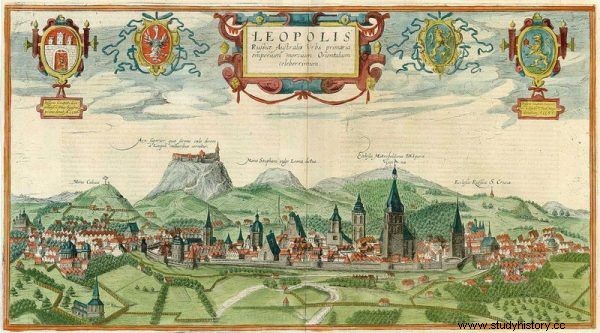
This is what Lviv looked like in 1616. Already at the end of the 15th century, the Tatars preferred not to attack it (source:public domain).
The Ottoman military, says a Turkish source, "led the captives like a flock of sheep." According to medieval sources, between 50,000 and 100,000 people were taken prisoner.
Maybe a repeat?
This event made Bali-be so impudent that at the end of 1498 he decided to invade Poland again. In medieval Europe, wars were usually fought from spring to fall, while the Turks arrived at the end of November. Apparently, they haven't asked anyone what the weather is like at this time of the year.
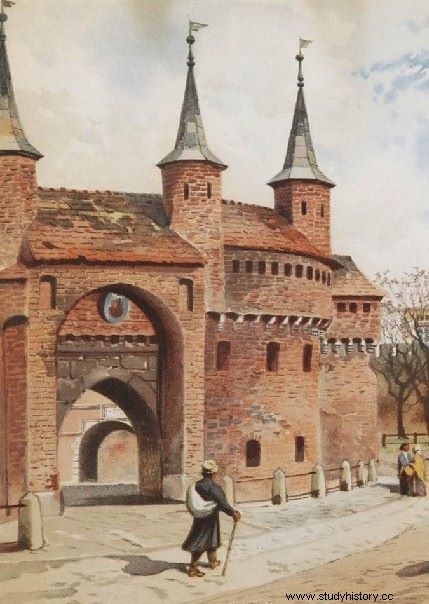
The Krakow barbican, which is today a tourist attraction, was created out of fear of a Turkish expedition at the turn of 1498/1499 (source:public domain).
The credible "The Life of Bayezid II" states that there were 40,000 to 50,000 Ottoman soldiers. They walked through Halicz, Żydaczów, Drohobycz and Sambor. The historian Frederic Papée believed that they wanted the shortest way to Krakow. Other researchers believe that the idea was to plunder new lands, because where they had been before, there was nothing to rob. The inhabitants of Krakow did not play in academic discussions. When the Turks found themselves 10 miles from the city, they "started to fix the walls everywhere", built a rampart from the side of Kleparz, and built a barbican in front of the Florian Gate, which can be admired to this day. The Turks did not rush to Kraków, nor were they prepared to besiege larger cities.
Winter in Poland always surprises
During this rally, Bali-bey must have been surprised that he was driving through practically depopulated areas, especially if he compared it with a spring expedition, when he took tens of thousands of prisoners. The reason was quite simple.
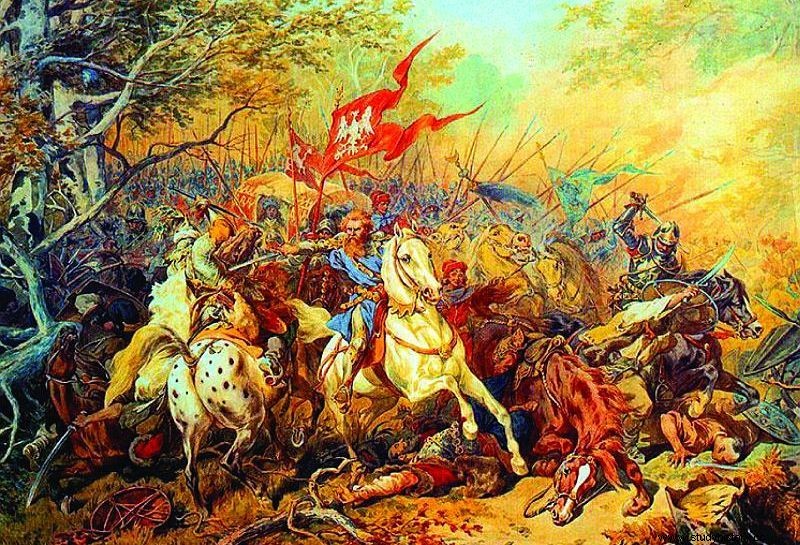
In this case, the Poles were not as brave as the legendary savior of King Olbracht, Jan Fredro. The picture shows a painting by Juliusz Kossak (source:public domain).
This time the Poles had earlier received information about the coming Turks and made a male decision - they fled. Some hid in forests, others in large, well-fortified cities. Meanwhile, Bali-bey stripped all the lands encountered, and burned over 400 churches in the process.
The Turks were already returning to each other, they were about to be on the Dniester when the snowstorm surprised them like Polish road workers. For over two weeks, the Ottoman army was immobilized. "Neither horses, nor camels, nor people could march." In addition, severe frosts have come. Soldiers died en masse, many lost frostbitten limbs, and there was a shortage of food. "The horses ate their saddles and the army ate their horses" . Most of Bali Bey's army was extinct.
Folk Costumes from Moldova
Probably only in February 1499, but some historians say that already a month earlier ... Never mind the exact dates. In any case, when the frosts stopped and it was possible to break through the snowdrifts, the Turks set off towards Moldova, through which they intended to return home, and at the same time to "remake" for the unsuccessful expedition.
Stefan the Great of Moldova did not intend to allow this to happen. He was a ruler cleverly navigating between Poland and Turkey, but who, above all, had the good of his own country at heart.
He knew that the passage of the hungry army of Bali Bey would be burdensome for his subjects, but he did not want to openly mess with the Sultan because it would have ended tragically. On the other hand, he knew that if his army engaged in fighting the Turks, the consequences could be dire in the years to come. Therefore he disguised his soldiers as Poles, sent them to the Prut River and ordered the Turks to be guarded.
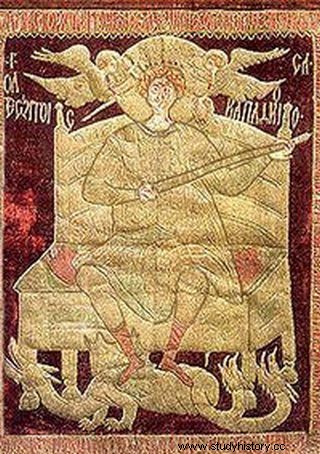
Battle pennant of the clever Stefan the Great (source:public domain).
It is one thing to allow the Turks to march quickly, and another to let them enter the populated areas of Moldova, where the emaciated army would engage in robbery. Driven to extremes, Bali Bey's men tried to cross the Prut. And that was the end of them. They had no chance against the Moldovans. According to historian Marek Plewczyński, 8,000 to 10,000 Turks died . For comparison:at that time Krakow, as if it were not the capital of a large country, had 20,000 inhabitants.
Although some Turkish troops managed to break through the ranks of Moldovans, the people of Stephen the Great chased them and killed them as far as the Danube. Only 400 of Bali-bey's army of many thousand returned to their homeland.
Turks winners? Not this time
The news of the pogrom of the Turks spread rapidly, but the farther from the scene, the more distorted it was. The Polish chronicles truthfully wrote about the frost that wiped out Bali Bey's army. In Istanbul, the well-informed sultan did not believe the version about Poles waiting for his army on the banks of the Prut.
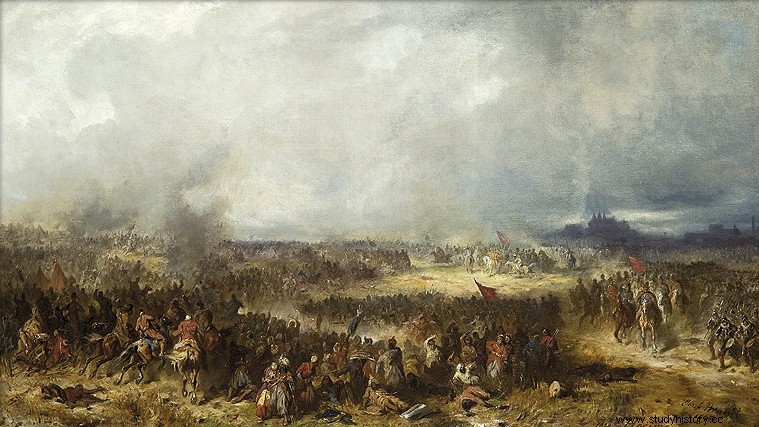
However, Poles could boast of a great victory over the Turks only after the Battle of Khotyn in 1621 (source:public domain).
In Western Europe, however, even the version that it was the Poles who defeated the Turkish army gained some popularity. In total, it is not surprising, because here are tens of thousands of Turkish soldiers invading our country, and several hundred of them returning to Turkey - someone had to kill them.
Later, the Poles deserved the fame of the Turks' winners (the flagship examples are Khotyn 1621 and 1673, Vienna 1683), but in the first pogrom of the Ottomans who invaded our lands, they had to be helped by the weather and Moldovan masqueraders.
